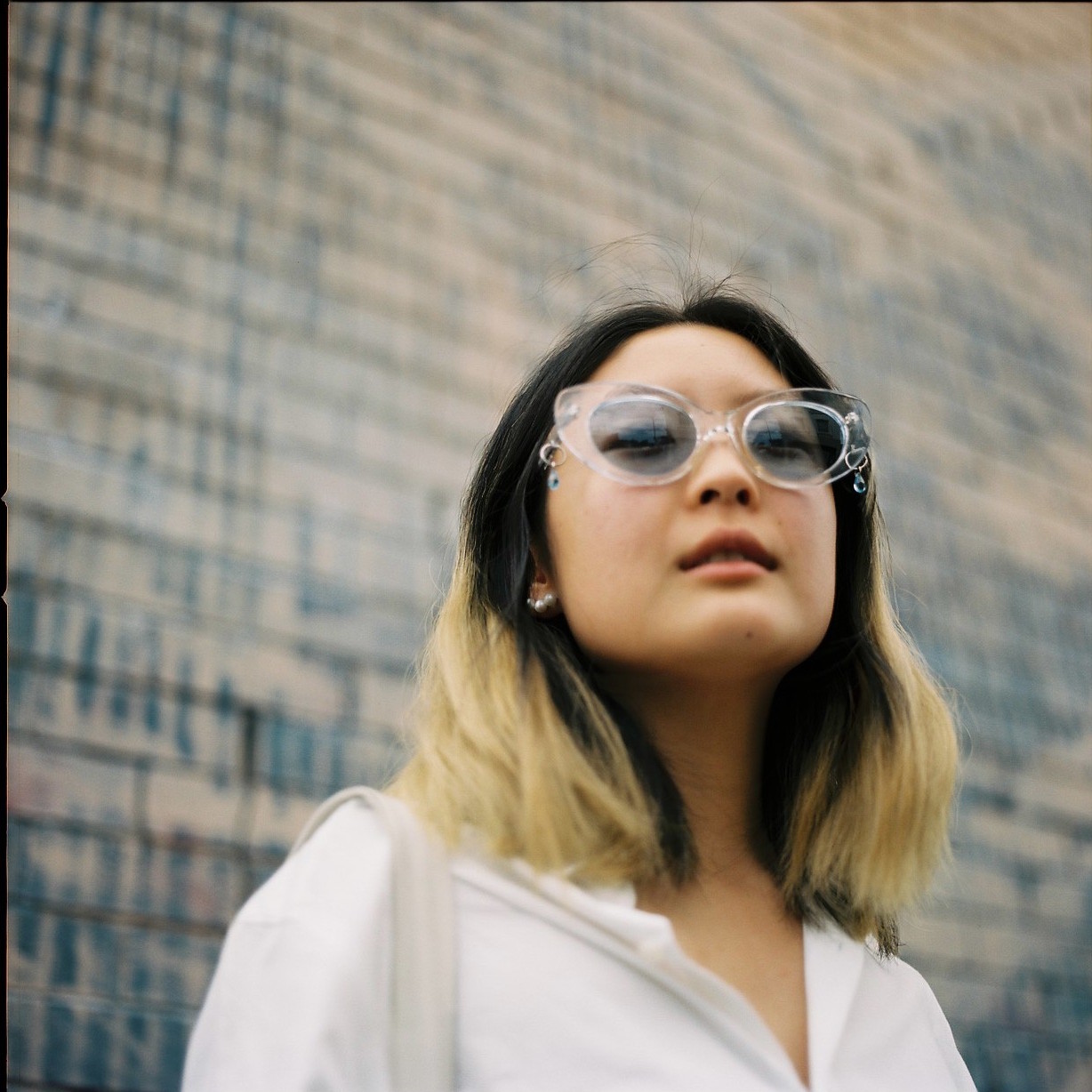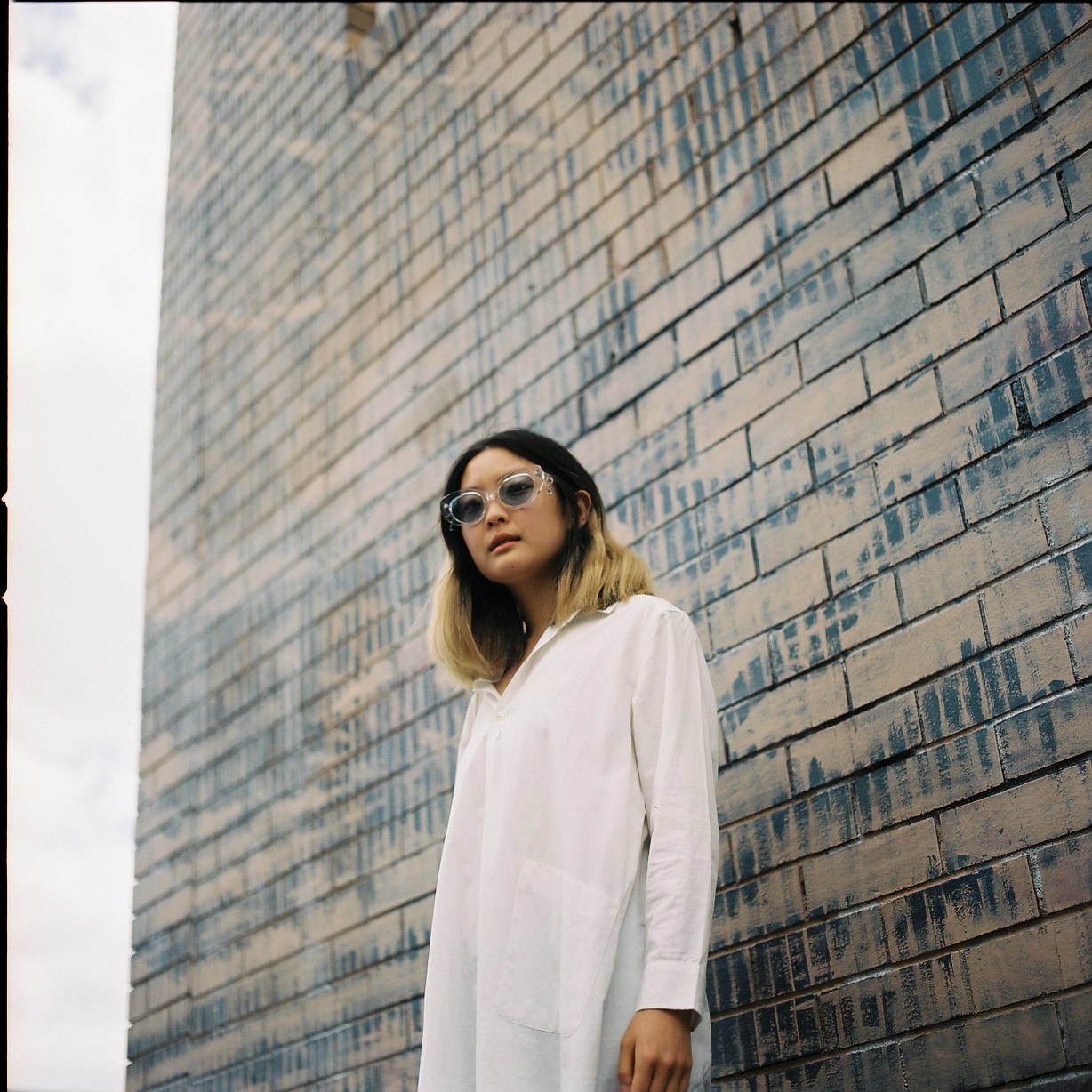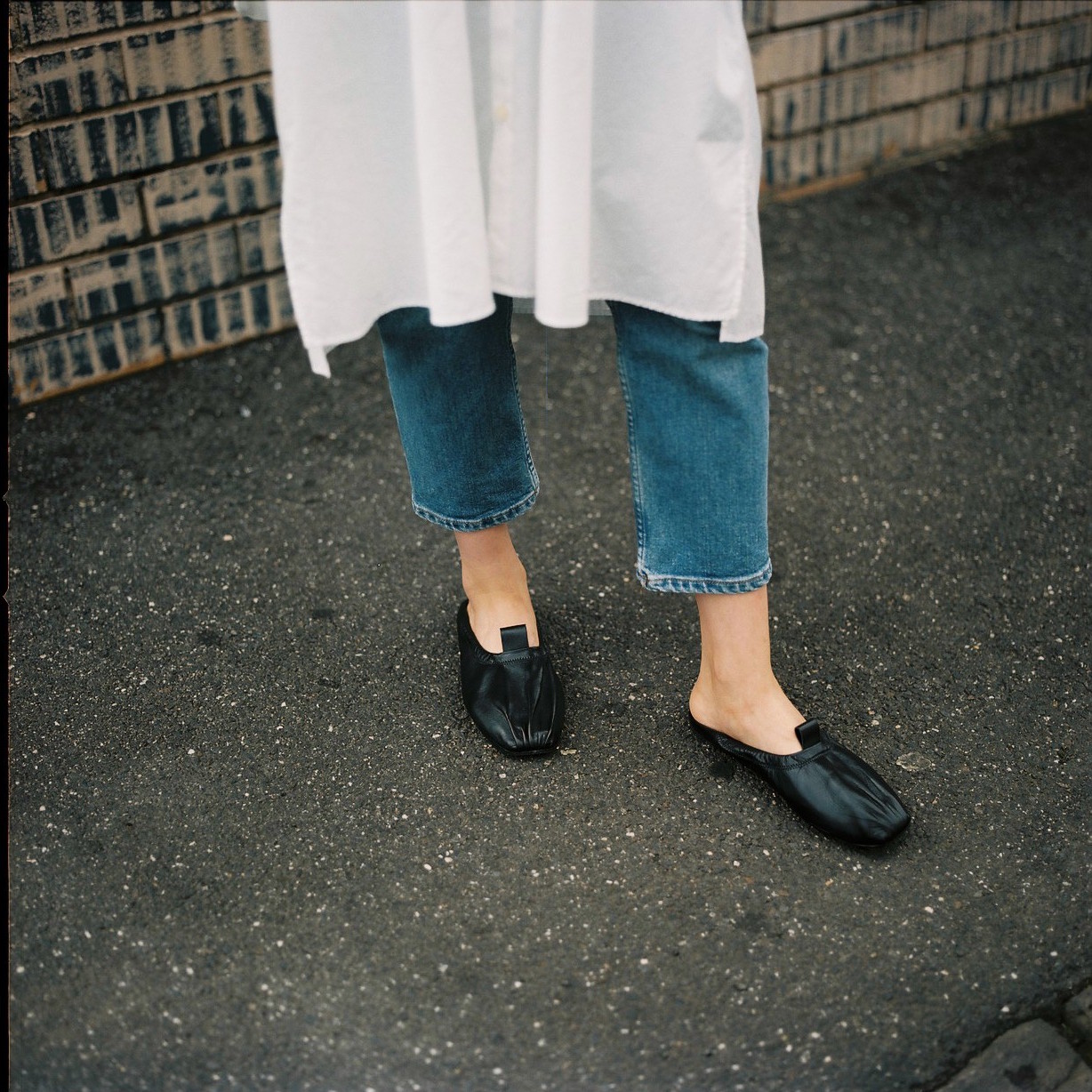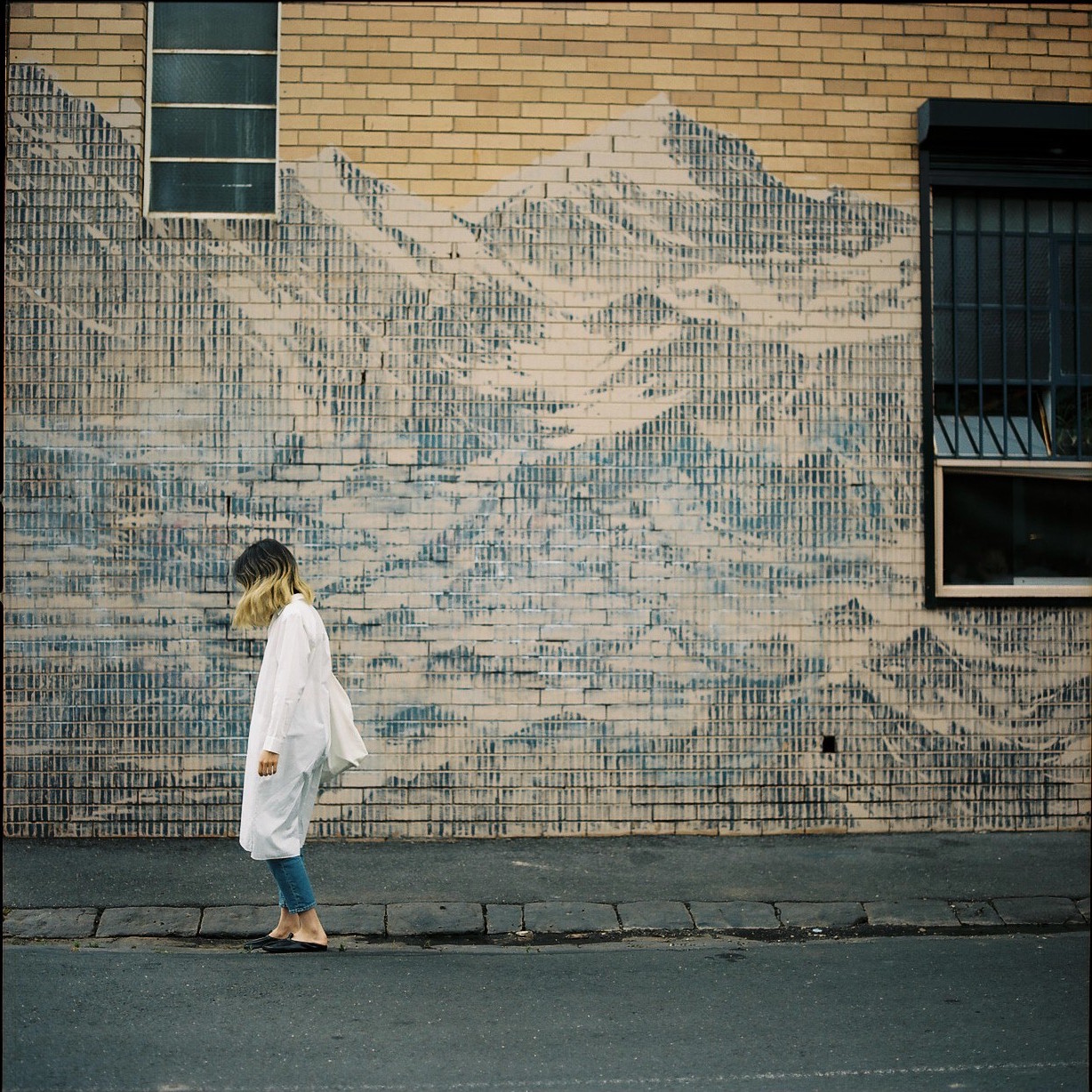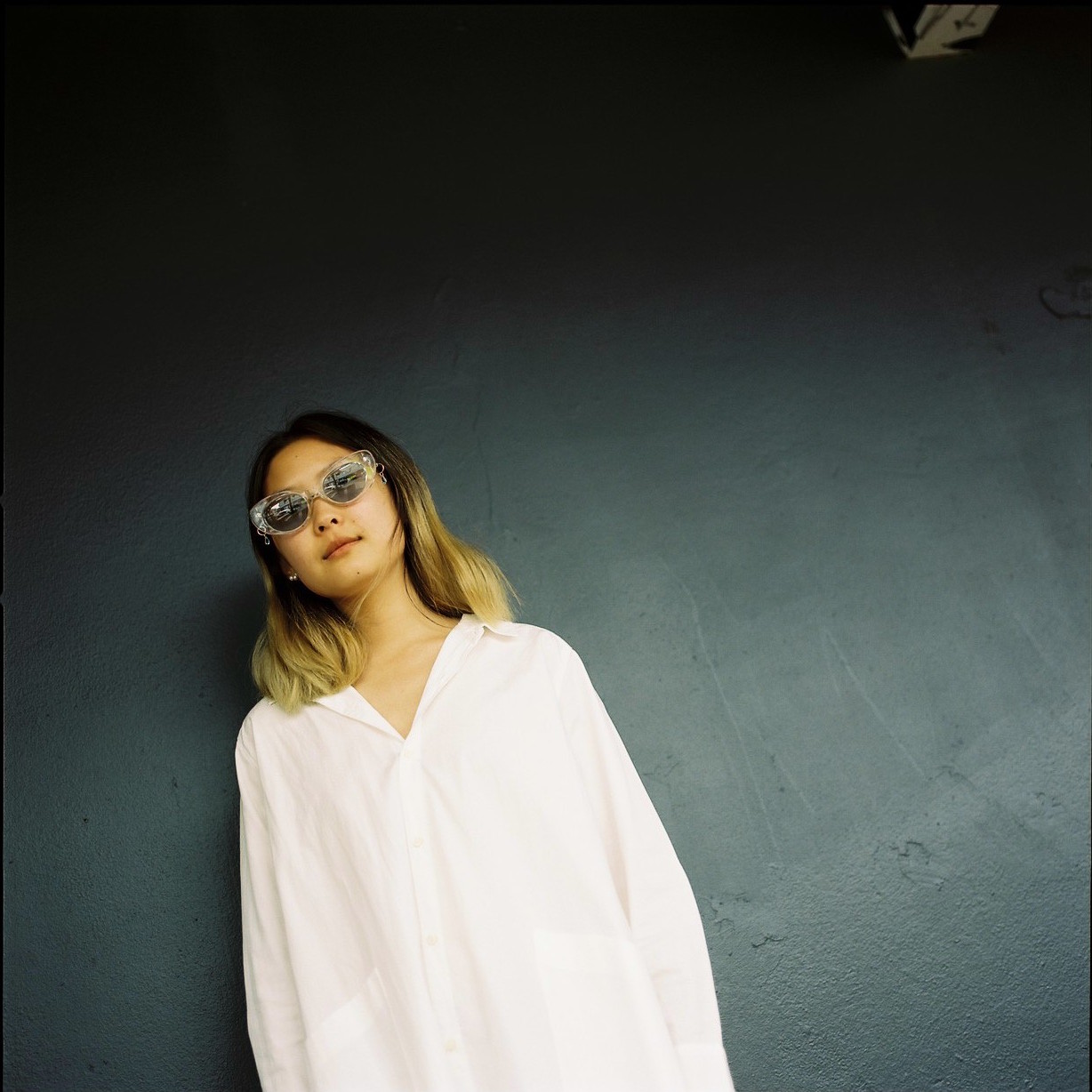Interview #4 — Helena Dong
Helena Dong is an emerging fashion designer. At twenty-one, Helena has interned for Kuwaii, FME Apparel and Marques Almeida, and currently works at Acne Studios. Helena has also modelled for labels such as Carpenter's Daughter, SUKU and Dot.Comme.
Helena spoke to Leah Jing McIntosh about her silver hair, fashion as object, how she stumbled into modelling, and the value of interning overseas.
So I thought we could start off talking about your creative practice—
When you say 'creative practice,' the first thing I think is that 'I don’t really have one!' I’m currently halfway through my degree in fashion design, so I suppose that my creative practice revolves around the briefs initiated by my studio classes. I still stumble whenever someone asks what kind of 'fashion' I make.
As of this moment, I use mediums within the realm of fashion, but I don’t want to create clothes to just to be worn. Ideally, I would like my work to be observed as objects, not necessarily as art, but as ‘fashion’ objects that intrigue us—objects that potentially blur the lines between creative disciplines.
I’ve been fortunate enough to be raised under influence of a creative mum. We moved to Australia from China in 2007 when I was eleven years old. Back in China, creativity wasn’t particularly encouraged at school, and I think that it’s the lack of traditional, academic influence that allowed me the freedom to pursue a creative discipline. Having said that, wanting to be great at what I do most likely derives from being raised in an Asian family.
Can you talk to us about your most recent project?
During my second semester last year, I attended a studio class called 'Against the Grain', where we focused on the grain of the fabric—the direction of the weave, that kind of thing. We began researching from that initial point of interest, and I started exploring the anatomy of leaves and plants, how you can see the directions of the veins in the leaves.
I wanted to translate that idea into clothing—to give clothing a sense of life, in a way. So I thought: 'How am I supposed to do that? How do I make clothes seem alive?' And I guess the most obvious option was to change the fabric visually. I looked into thermochromic and hydrochromic materials to weave into the fabric, as well as paints to apply topically.
So the clothing seems to come alive, whilst remaining structurally the same object.
So thermochromic materials change colour under fluctuating temperature. If you put the garment out in the sun, it’ll heat up and turn from black to green, it is almost like the way plants respond to sunlight, absorbing the nutrients, the sunlight.
The hydrochromic paint is like a white paste that is most effective when applied to a patterned or coloured fabric. When you wet it, such as by spraying it with water the way you would water a plant, the white layer actually fades and you see the pattern underneath. When it dries, the white reappears.
Is this an isolated project, or is it something you’re interested in on a larger scale?
This concept was specifically developed for that studio class. But I guess that’s the general direction I’d like to head in—doing things that are a little bit different, not just clothes to be worn.
As a fashion student, what else do you get up to?
I interned with Marques Almeida in London for six weeks during last year’s winter break—the quietest time of the year for them actually. Because they had just finished their resort collection, and hadn’t fully started working on spring-summer, so I actually did a lot of paperwork; filled out a lot of specification sheets and measured garments. On my first day I was asked to cut like, silk chiffon for a custom made wedding dress. I freaked out a bit at first, I didn't know whether there was meant to be a proper way to cut delicate fabric—I didn’t want to mess it up on my first day.
I think it’s so important to do an internship locally or overseas while you’re still at the early stages of your course. So then you have another chance to do something else later on, when you have a better grasp of what you want to do. I was just so excited about the idea of going to London. I probably shouldn't say this, but I did look forward to finishing up early, so I could go and check out galleries and meet my friends.
Did you have a favourite gallery in London?
I loved the Tate Modern, but I don't even remember what I saw, I was just impressed by amount of content it offered. I also enjoyed visiting White Cube—they publish a quarterly journal called The White Review.
How and when did you first start modelling?
Modelling for me has always been a side-project, I still giggle a little when someone asks to photograph me even now. The first time I modelled was when my friend, Heather Lighton, took some portraits of me. We met at a Craft Victoria event while I was a third of the way through Year 12. At that time my hair was bleached blond – she came up and was like: 'I love your hair. Can I take photos of you?'
The photoshoot for Kuwaii just happened as we all knew each other—I had interned with Kristy the designer of Kuwaii when I was sixteen. That’s what I love about the fashion scene in Melbourne—collaborations!
Modelling kind of helps with placing my mind somewhere other than the ongoing academic anxiety. Perhaps the best thing about doing photoshoots is meeting other creative people, and expanding that network whilst getting some really flattering photos. I actually met the designers of Marques Almeida—Marta and Paulo—by modelling their resort collection at Pet Shop Girls! I took advantage of that opportunity by showing them my portfolio during a coffee break.
How do you view the experience of Asian-Australian models in Australia?'
My experience from casual modelling is that being an Asian-Australian, it takes more for others to notice your potential as a model. For me, it was the perks of my bleached-silver hair that got the whole gig going.
It seems that without some kind of 'extra-ness' to grant you individuality—such as coloured hair, unique facial features or excellent taste in clothes—it is rather rare for an Asian girl to be stopped in the streets and photographed, let alone booked for campaigns. Due to health reasons I've had to stop bleaching my hair, and I wonder if I'd be doing more shoots if I hadn't.
Last year on my way home from London, I was actually almost booked for a shoot with Nike. When they found out that I had darker regrowth and wasn't able to undergo further bleaching—despite me offering to tone the rest of my hair silver again, they went with someone else. It was a bit disappointing.
Do you have any favourite designers?
I certainly look up to Hussein Chalayan and his multidisciplinary projects. And Kenya Hara, who is perhaps better known as the art director of Muji.
When did you become interested in the fashion industry?
Well, as I kid I was obsessed with Barbie Dolls.
Do they all wear Marques Almeida now?
Haha, no! I was obsessed with them until I was about twelve. And then I went to see this Barbie exhibition in 2009, and I met Robert Best—a Barbie designer. I learnt that he started out in fashion design, then moved onto designing clothes for dolls. After that encounter, my perspective just shifted. Before it was clothing for miniature figures—now it’s clothing for life-size people.
What are some of your inspirations?
Things that inspire me change from time to time. The one that tends to stay with me is the colour white, in particular the sense of emptiness it conveys and its potential to be filled.
Are you working on anything at the moment?
I’m not working on anything at the moment. On the holidays I have no willpower to do anything - it's terrible, I know!
I have so little willpower in summer.
I’m always like: Netflix! A new show! And then I’ll binge-watch it until I find another show.
Do you have any advice for aspiring designers, or for people in general?
I feel too young to give any kind of life advice! If there's anything I can offer, it would be to eat well, sleep well, and treat yourself - what would be the point in doing any of the stuff we do if we end up malfunctioning?
What are you currently listening to?
A true-crime podcast, 'Criminal'—each episode runs for 30 minutes, which is really great for when I'm on public transport.
What are you currently reading?
I only just started reading Unfinished: Thoughts Left Visible. It's an exhibition catalogue that explores the concept of 'unfinishedness' in art and how the state of incompletion can be seen as extraordinarily powerful.
find out more
Interview & photographs by Leah Jing McIntosh

